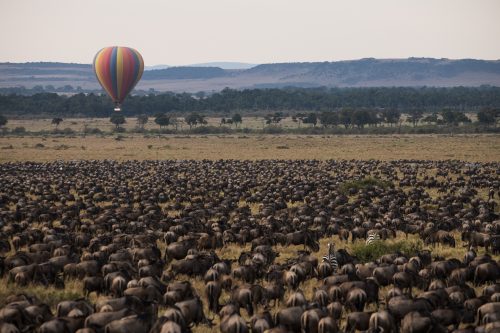
The grasslands of East Africa can be fairly overwhelming for the first-time visitor. Throw in a million wildebeest and a seemingly endless accompaniment of general game like giraffes, topis, zebras, elephants — not to mention the lions, cheetahs and leopards that are never too far away — amongst an infinite sea of rolling grass-covered hills, and you have an ecosystem that is about as close to Eden as one can get.
No matter how many photographs you’ve seen or documentaries you’ve watched, there’s very little that can prepare you for your first experience of the Great Migration. It’s hard to describe to the uninitiated without sounding like you’re making use of almost constant hyperbole.
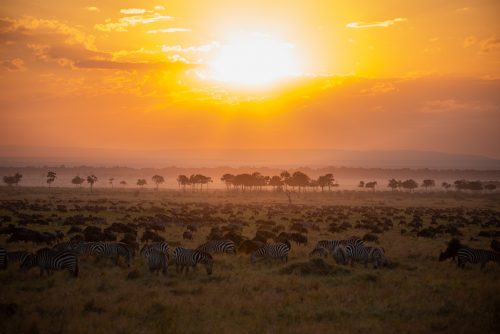
Literally as far as the eye can see — all the way into Tanzania — there is wildlife. The combination of biodiversity and volume is simply staggering. It feels at times as though you need to rest your eyes on account of the overstimulation. Yet you can’t turn away, the wildlife is everywhere.
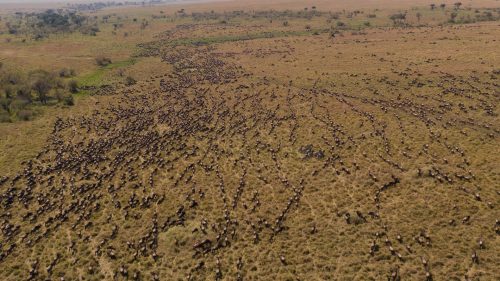
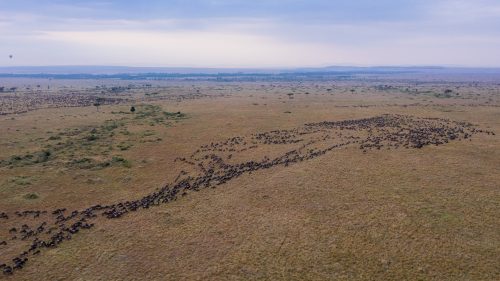
The one hope for visual ‘solace’ you may have is the escarpment, looking up towards it and away from the grasslands. Yet you automatically find yourself scanning the large boulders and magnificent trees for any sign of a leopard, and invariably a buffalo or elephant will wander out of the woodlands, so there’s no reprieve.
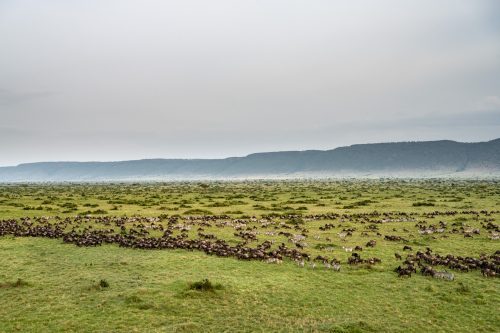
It’s the auditory experience that really blows you away though, at least it was for me. Driving slowly through the massed herds of wildebeests as they enjoy the fresh grass that is the reason for them being there in the first place, you quickly accept that the ambient noise of your time in this part of the world will not be the whisper of the wind in the grass, nor the soft chorus of birdsong, but instead the grunting and snorting of countless gnus as mothers call to young, bulls spar with each other, and small family groups stay in touch while moving to slightly greener pastures.
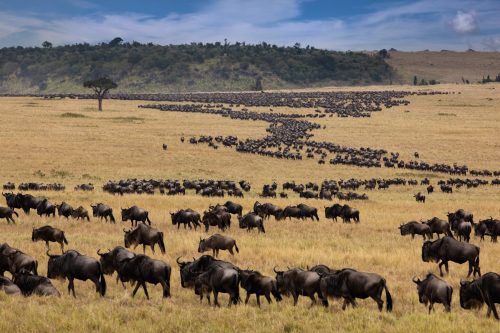
It never stops. Day and night. Ceaseless. Even when all else is still in the deepest hours of darkness and you’d think only the nightjars would be calling and, if you’re lucky enough, a lion, the noise goes on. From Angama Mara, high up on the Oloololo Escarpment, you can hear it, way below on the plains of the Mara Triangle, and on some nights as the herds move to higher ground, right outside your tent. Then there’s the smell. The sweet smell that is so characteristically and uniquely wildebeest. Part territorial scent, part dung, it lingers in the air like a memory, even when the herds have been summoned elsewhere by the distant sight of falling rain.
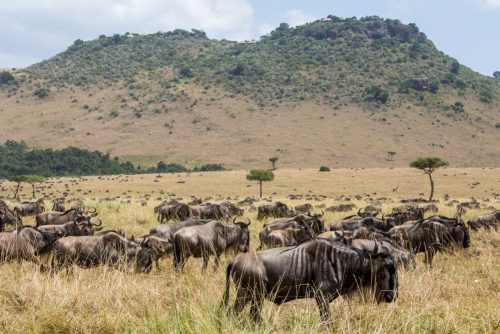
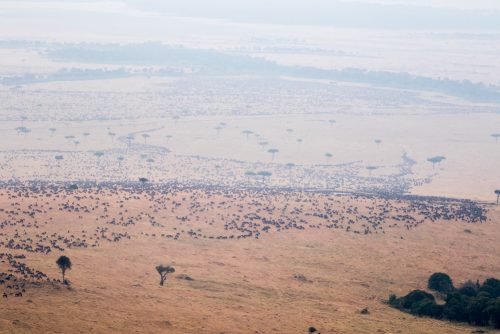
Scent-evoked memories tend to be pure and emotional because the olfactory bulb sends its information directly to the amygdala, which is the human memory bank for emotional experience. The other four senses undergo extra processing on the way, but there is none for scent so the link between smell and memories is as raw as can be. I know that whenever I get even the faintest whiff of wildebeest, I’m transported straight back to the herds of the Mara Triangle, and I’m surrounded by Africa’s greatest wildlife spectacle once more.
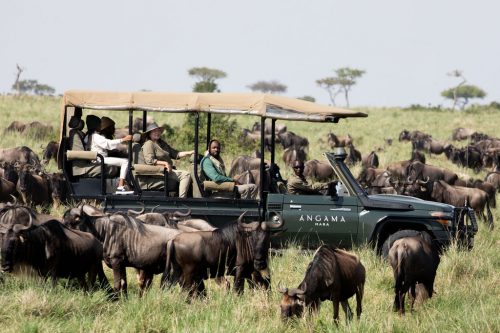
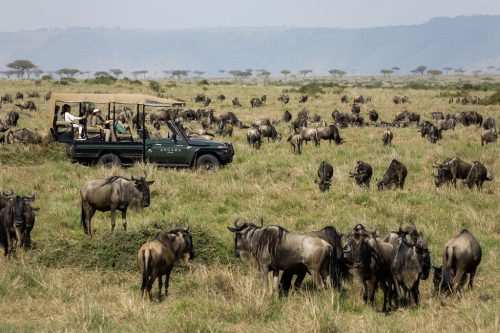
I won’t go so far as to say that touch and taste feature highly as part of the Great Migration experience unless gripping the bar of the Land Cruiser so tightly through excitement lends you an undeniable familiarity with its texture (which it does), or the taste of your morning coffee (locally sourced, rich aromatic Kenyan beans) adds immeasurably to the experience (which it does), but the assault on your senses of smell, sight and hearing are so powerful that anything else on top of this would savour of overkill. The Great Migration is as raw as it gets as a wildlife experience. It’s something that not only takes your breath away with its sheer scale but at the same time evokes a feeling of deep nostalgia as it reminds you of what so much of Africa used to be like.
It’s so powerful it leaves you feeling truly drained after your first taste of it. Yet all you want to do is dive straight back in.
It is Africa at its very finest…
Filed under: Stories From The Mara
Subscribe for Weekly Stories
Comments (0):

The Angama Shamba